Not knowing your project’s profitability is like driving without a GPS. You could be heading in the right direction, or you could be ultimately off course. Tracking project profitability is essential for project performance evaluation and helping businesses to stay on top of their finances and maximize profits.
Fortunately, with the right tools and strategies, project profitability tracking doesn’t have to be a hassle.Monday.com is one of the most popular project management solutions for businesses and professionals. It provides a wide range of features to help you keep track of your projects, including project profitability tracking.
In this article, we’ll show you how to use Monday, one of the most popular project management software, to streamline your profitability tracking and take your business to the next level. Let’s get started!

What is Project Profitability
Project profitability measures how much your project makes relative to its costs. It’s a valuable metric for businesses to measure their performance and identify areas where they can improve. A profitable project indicates that the company successfully manages its resources and maximizes investment returns or ROI.
On the other hand, unprofitable projects suggest that something needs to be fixed in the management process and requires attention. Project profitability considers all of the project’s costs and revenues, including expenses such as salaries, materials, and other overheads and revenue generated from the project.
Interestingly, profitability tracking is not a one-time event; instead, you should approach it as a continual process. This is where project management software like Monday comes in handy. We’ll show you how.
Why Should You Track Project Profitability Continuously?
While project profitability measures the success of a project financially, it also has other benefits that should encourage companies to track it continually. Here are a few reasons:
- Identify areas for improvement: By monitoring project profitability, businesses can identify areas that require improvement in their project management processes. This allows them to make strategic decisions that will increase the profitability of future projects.
- Maximize profits: Project profitability tracking helps businesses to understand which projects generate the highest profit margins. With this information, they can make informed decisions about which projects to pursue and avoid.
- Optimize resource allocation: Tracking profitability allows businesses to understand how their resources are being utilized and make adjustments to optimize resource allocation. This helps to ensure that resources are being used effectively, and costs are kept under control.
- Manage risk: Project profitability tracking allows businesses to assess the financial risk associated with a project. This enables them to take proactive measures to mitigate risk and ensure the project’s financial success.

Key Components of Project Profitability
To track project profitability accurately, it’s essential to understand the key components that make up the metric. Here are the four main components of project profitability:
Revenue
Revenue is the total amount of money earned from a project. It’s usually calculated by multiplying the unit price and quantity of goods or services sold. When calculating revenue, you should include any additional fees or income from the project.
Cost
Cost is the total expenditure incurred in the project. Costs can be classified as direct and indirect costs. Direct costs are directly related to the project, such as labor and material costs. In contrast, indirect costs are expenses that are not directly related to the project, such as overheads.
Profit
Profit is the income generated by a project after deducting all the costs incurred. Profit is the difference between revenue and total costs. It is the ultimate goal of any project and the key metric for evaluating the financial success of a project.
Margin
This is the percentage of profit generated by a project relative to revenue. Margin is a critical metric for evaluating the financial performance of a project, as it provides a clear picture of the project’s profitability. A higher margin indicates that the project generates more profit for every dollar of revenue, while a lower margin suggests the project is less profitable.
When calculating your project profitability, it’s essential to consider all the above components.
Monday’s Useful Features to Track Project Profitability
Monday provides a range of features to help you track project profitability. The most useful ones are its reporting and analytics, timeline view, cost tracking, resource management, budgeting, and invoicing.
Insightful and visual dashboard
Monday’s dashboard provides an overview of your project and its performance. You can quickly identify tasks that need to be done, key metrics such as revenue and expenses, team capacity and utilization, project milestones, and more. This helps you track how well the project is progressing toward profitability.
Monday allows users to create custom dashboards to track a project’s key performance indicators (KPIs), including revenue, costs, profit, and margin. This provides a comprehensive overview of project profitability and helps businesses to make informed decisions.
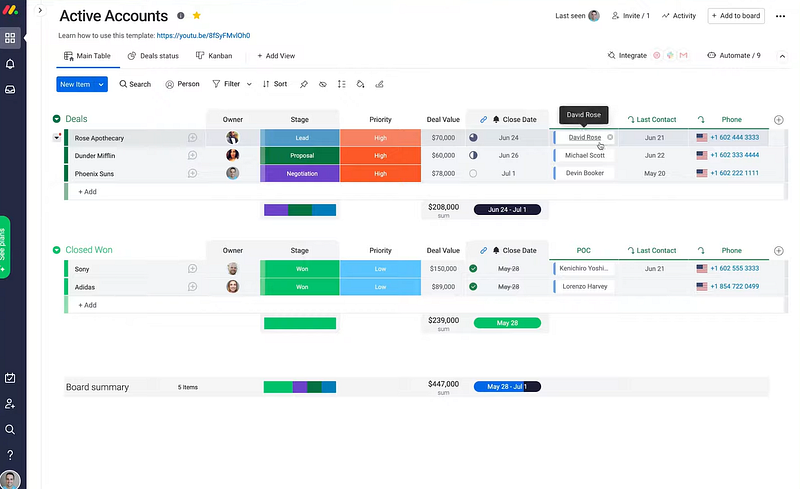
Reporting and Analytics
Monday also offers reporting and analytics to help you track project profitability. It allows you to generate reports on revenue, costs, profits, budgets, invoices, and more. Additionally, the software provides visual insights into how the project performs over time. This helps businesses spot trends that can improve their bottom line and maximize profits.
You can easily set custom ranges for your reports, filter data by date and project, and export them to other popular formats such as Excel or PDF.
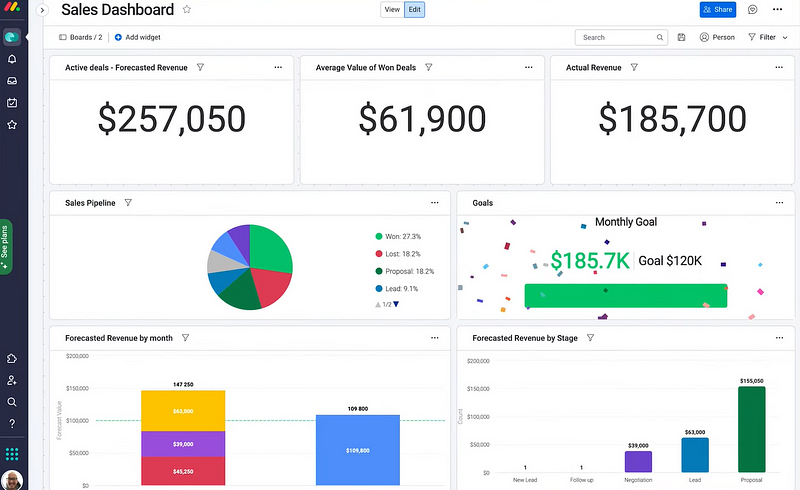
Timeline View
Monday’s timeline view provides an overview of the project and its progress. You can quickly identify tasks that need to be completed and the necessary resources for each task. This helps you track project profitability in real time and identify potential risks and opportunities before they become issues.
The timeline also allows users to forecast future costs, revenues, and profits so they can plan accordingly. This helps businesses make decisions based on accurate data rather than guesses or assumptions about how much a project will cost or generate revenue.

Cost Components Tracking
Cost components tracking is essential to project profitability tracking. Monday allows you to track each cost component in real-time and generate reports for better visibility into the project’s finances. This makes it easy to identify high-cost activities, adjust your budget accordingly, and maximize profits.
Especially with the custom column addition feature, you can add columns to track the cost components of each task. This feature allows users to break down the costs into different categories, such as labor, materials, equipment, and other overheads.
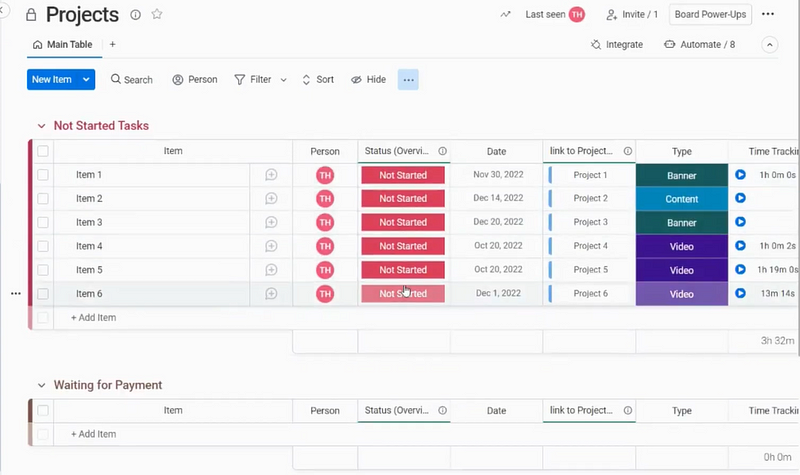
Budget Tracking
Controlling your project budget is essential for maximizing profitability. Monday’s budget tracking feature helps you keep a close eye on your project expenses and ensure they are within the agreed-upon budget. It also provides insights into how much money has been spent and where it has been spent.
Monday also lets you compare actual costs against projected expenses. This helps you identify areas where you can cut costs and optimize profitability.
Integration with Accounting Tools
You can integrate Monday with various accounting tools, such as Quickbooks and Xero. This allows businesses to track project profitability more efficiently. These integrations provide real-time insights into your projects’ financial performance, enabling you to make adjustments to maximize profits.
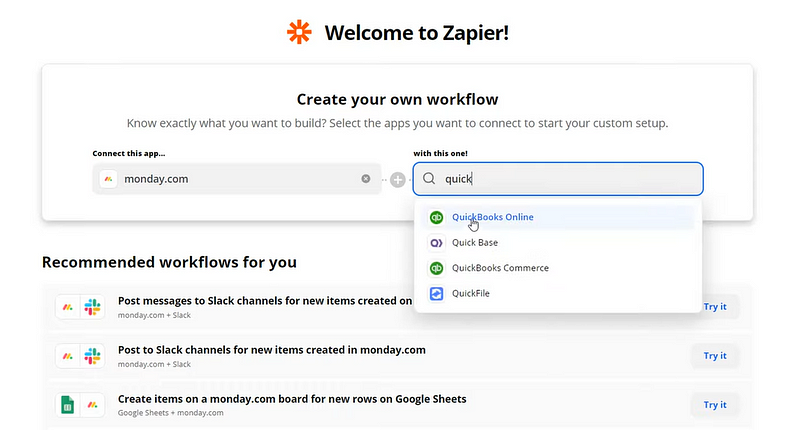
Configure Monday for Project Profitability Tracking
To track project profitability effectively, you need to configure Monday with the right tools and settings. Here are some steps to configure Monday for project profitability tracking.
Step 1: Define the Key Performance Indicators (KPIs)
To start, you need to define the KPIs you will track to measure project profitability. This could include revenue, costs, profit, margin, and other relevant financial metrics. Once you have defined the KPIs, you can create a custom dashboard that displays the data in real-time.
Step 2: Set Up Time Tracking
Time tracking is an essential feature for calculating project costs accurately. On Monday, you can enable time tracking for each task, allowing team members to log their time directly in the system. This data can be used to calculate labor costs and project revenue.
To enhance your time and project tracking capabilities by manifold, you can also use third-party tools like Day.io, which offers many advanced cost and revenue-tracking functionalities.

Step 3: Create Budgets
You can use Monday’s budget tracking feature to create a project budget and track actual expenses against it. This helps to ensure that project costs are kept under control and expenses are allocated correctly to the project.
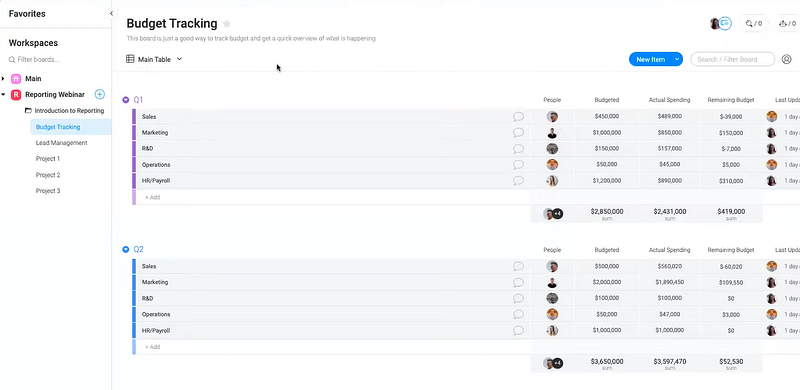
Step 4: Use Integrations
Monday integrates with various accounting and financial management tools, such as QuickBooks and Xero. You can use these integrations to import financial data directly into Monday and generate reports on project profitability.
Step 5: Customize Reports
Monday provides a robust reporting feature that allows you to create custom reports on project profitability. You can create reports that display data on specific KPIs, such as revenue or margin, and filter the data by date, task, or project.
Best Tools to Track Project Profitability on Monday
The Monday app marketplace lets you find and install some handy tools for tracking project profitability. These tools offer different functionalities and can create custom reports, track expenses, generate invoices, measure performance metrics, and more.
Here are some of the best Monday apps you can use to track your project’s profitability.
1. Day.io – Best Time Tracking App for Monday
Day.io is a time-tracking and billing app that allows you to track the number of hours worked on each project, log billable and non-billable hours, and generate client invoices. It also lets you add hourly rates for different team members so that you can accurately calculate project profitability.
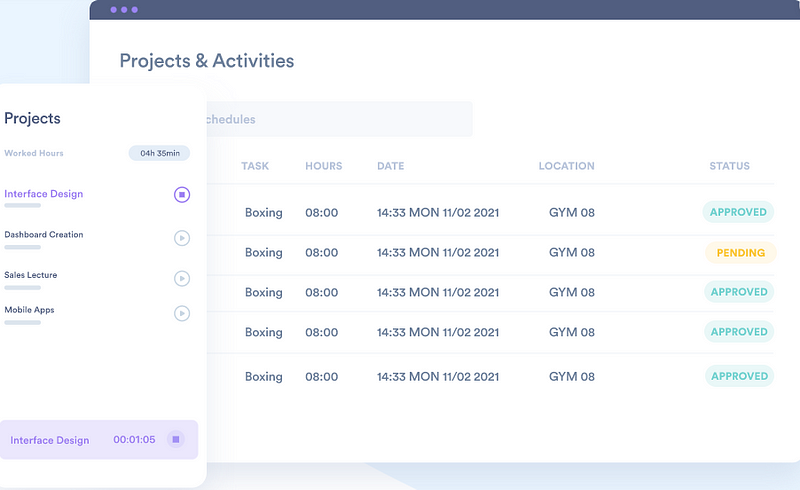
Day.io has several advanced features, including project cost tracking and budgeting, detailed team performance, and productivity reports.
Features
- Automatically generate timesheets for payroll and billing purposes
- Continuous task and project tracking
- Attendance tracking with super punch
- Tracking billable hours with ease using the ‘Billable’ feature
- Recording expenses related to tracked time sessions
- Several security and authentication features including GPS and biometric verification
- Generating graphical reports to analyze how you’re spending your time
- Creating detailed billing reports and invoices with customizable templates
Pricing
- Project time tracking: Starts from $6/user per month
- Time & attendance tracking: Starts from $4/user per month
2. Moneylogz – Most Useful for Financial Data Tracking
Moneylogz is an app designed to make project profitability tracking more manageable and efficient on Monday.com. It syncs your bank accounts and credit cards automatically with your monday.com workspace, allowing you to easily track your business’s entire financial operations.

Moneylogz integrates with over 8000 banks and financial institutions, giving you access to historical data from linked accounts and new transactions and balance updates directly in your Monday workspace.
Features
- Smooth syncing of your bank and credit card accounts
- Automatically update boards with financial data
- Automatic segmentation of transactions into categories and sub-categories
- Accountants and bookkeepers profiles for managing thousands of accounts
- Secure encryption & privacy for your financial data
- Integration with over 8000 banks and financial institutions
- No visibility to banking credentials or ability to move money at your bank account
- Instant access to historical data from linked accounts
- No selling of user data
- Detailed security statement outlining Moneylogz’s commitment to safety
Pricing
- Starter: $34/month, unlimited usage, one bank or credit card account
- Standard: $49/month, up to three bank or credit card account
- Pro: $69/month, up to seven bank or credit card account
3. Clockhound – Simplified Billing and Time Management
Clockhound offers one of the most intuitive billing and time management experiences on Monday.com, allowing you to track profitability. It eliminates the need to use separate software for project management and time tracking, allowing teams to track progress, tasks, and time more accurately in one place.

With Clockhound, you can control billable time precisely and gather time records in one board – all from a desktop or mobile device. Plus, it’s easy to add Clockhound to existing boards to avoid having inconsistent records across multiple workspaces.
Features
- All-inclusive time and project management solution
- Separating billable and non-billable hours
- Custom rates and billing codes
- Item view available from the dashboard or mobile app
- Time entries from across instances recorded in one board
- Set custom reports by week, month, or custom timeframes
- Reports per consultant, project team, or customer
- Pivot table configuration with a graphical interface
- Export data for bookkeeping and payroll purposes
- Archive time records for compliance
Pricing
- Up to 10 users: $12/month
- Up to 25 users: $30/month
- Up to 50 users: $55/month
- Up to 100 users: $100/month
- Up to 1,000 users: $800/month
- Unlimited users: $7,000/month

Wrap-Up: Step Up Your Project Profitability Tracking with Monday
Project profitability tracking is one of the core functions of project management and should be done regularly. With Monday, you can access the features and tools that easily track your projects’ profitability.
Using the best apps from the Monday marketplace, you can easily create custom reports, measure performance metrics, track expenses, and generate invoices. Sign up for Day.io today to implement advanced time-tracking features in your project management arsenals.
